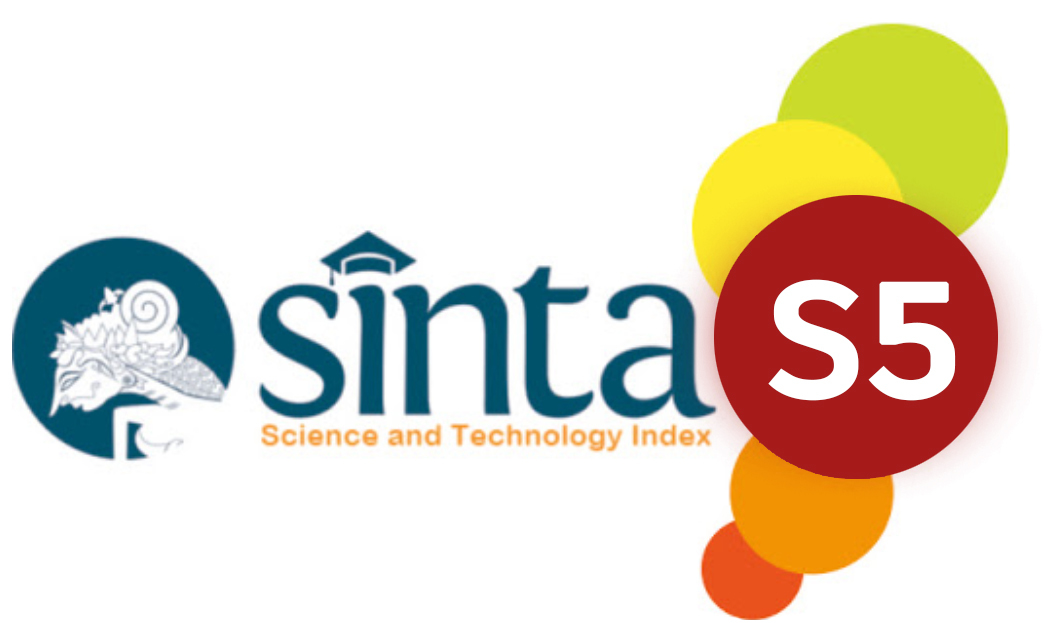Optimizing Spare Part Storage Efficiency in the Automotive Sector Using the PDCA Cycle: A Case Study at Manyar Automotive Companies
Abstract
An inefficient spare parts storage system can disrupt the smooth operation of a company, increase logistics costs, and slow down customer service processes in the automotive sector. The purpose of this study is to evaluate the spare parts storage system at Automotif Company Manyar dealership using the PDCA (Plan-Do-Check-Act) approach as a continuous improvement approach. This study uses a descriptive qualitative approach with a case study method. Data was collected through observation, interviews, and documentation studies. The sample in this study used purposive sampling techniques. The results of this study indicate that the causes of inefficiency in the storage system include errors in estimating needs, lack of staff training, and inaccuracies in the spare parts location information system. The implementation of PDCA can effectively and successfully improve the effectiveness of the storage system through the renewal of work procedures, integration of information systems, and regular training for personnel. This study emphasizes the importance of applying a systematic approach to improve warehouse management quality and support the operational efficiency of automotive dealers.
Keywords
References
Aslamiyah, S., & Santoso, R. A. (2023, August). Implementasi Strategi Pemasaran Pada PT. Bank Perkreditan Rakyat (BPR) MCM. UMMagelang Conference Series (pp. 61-78).
Atmaja, I. R. (2022). Analisis Penyebab Deadstock Spare Part Pada Pt. X. Arthavidya Jurnal Ilmiah Ekonomi, 24(1), 81-95.
Bungin, B. (2011). Metodologi penelitian kualitatif: Aktualisasi metode ke arah ragam varian kontemporer. Jakarta: RajaGrafindo Persada.
Christopher, M. (2016). Logistics & Supply Chain Management. Pearson.
Krajewski, L. J., Malhotra, M. K., & Ritzman, L. P. (2019). Operations Management: Processes and Supply Chains. Pearson
Yadav, V. S., Singh, A. R., Raut, R. D., & Cheikhrouhou, N. (2021). Design of multi?objective sustainable food distribution network in the Indian context with multiple delivery channels. Computers & Industrial Engineering, 160, 107549
Mohamed, Y. H., Abdul Rahim, A. R., & Ma'aram, A. (2020). The effect of halal supply chain management on halal integrity assurance for the food industry in Malaysia. Journal of Islamic Marketing, 12(9), 1734-1750.
Creswell, J. W., & Creswell, J. D. (2017). Research Design: Qualitative, Quantitative, and Mixed Methods Approaches. SAGE Publications.
Hassan, A., Elamer, A. A., Fletcher, M., & Sobhan, N. (2020). Voluntary assurance of sustainability reporting: Evidence from an emerging economy. Accounting Research Journal, 33(2), 391-410.
Chopra, S., & Meindl, P. (2007). Supply chain management. Strategy, planning & operation (pp. 265-275). Gabler.
Roehrich, J. (2008). Supply chain management: Strategy, planning & operations, by Chopra, S. and Meindl, P. Journal of Purchasing & Supply Management, 14(4), 273-274.
Creswell, J. W., & Creswell, J. D. (2017). Research design: Qualitative, quantitative, and mixed methods approaches (5th ed.). SAGE Publications.
Deming, W. E. (1986). Out of the Crisis. MIT Press.
Deming, W. Edwards. (1986). Out of the Crisis. MIT Press.Imai, Masaaki. (1986). Kaizen: The Key to Japan's Competitive Success.
Goh, M., & Lim, Y. F. (2014). Centralizing slow-moving items in a retail network: A case study. International Journal of Production Economics, 150, 40–50. https://doi.org/10.1016/j.ijpe.2013.11.022
Imai, M. (1986). Kaizen: The Key to Japan’s Competitive Success. McGraw-Hill.
Johnson, R; Schoonenboom, J. (2017). How to Construct a Mixed Methods Research Design. Kolner Z Soz Sozpsychol.
Lincoln, Y. S., & Guba, E. G. (1985). Naturalistic inquiry. Beverly Hills, CA: SAGE Publications.
Miles, M. B., & Huberman, A. M. (1994). Qualitative data analysis: An expanded sourcebook (2nd ed.). Thousand Oaks, CA: SAGE Publications.
Molina-Azorín, J. F. (2016). Mixed methods research: An opportunity to improve our studies and our research skills. European Journal of Management and Business Economics, 25(2), 37–38. https://doi.org/10.1016/j.redeen.2016.05.001
Putri, A. D., & Wibowo, R. A. (2021). Evaluasi Sistem Manajemen Inventori di Gudang Spare Part Menggunakan Metode FIFO dan Just In Time. Jurnal Logistik dan Supply Chain, 9(1), 22–31.
Richards, G. (2017). Warehouse Management: A Complete Guide to Improving Efficiency and Minimizing Costs in the Modern Warehouse. Kogan Page.
Aslamiyah, Suaibatul; Saffaanatuzaqiya, Sazsabilla; RIZQI, Maulidyah Amalina. Strategi Peningkatan Kinerja Guru MTs. Ihyaul Ulum Ujung Pangkah Gresik Melalui Pelatihan, Motivasi dan Kepuasan Kerja. In: UMMagelang Conference Series. 2021. p. 239-246.
Rizal, M., & Hidayat, A. (2018). Pengaruh Sistem Informasi Inventory Terhadap Efisiensi Manajemen Gudang. Jurnal Sistem Informasi dan Teknologi, 7(2), 45–53.
Saputra, M. R. B., & Aslamiyah, S. (2025). Analisis penerapan six sigma untuk mengurangi defect pupuk PT. Petrokopindo cipta selaras. Jursima, 12(2).
Siregar, F., & Situmorang, R. (2020). Analisis Pengendalian Persediaan Barang Menggunakan Metode EOQ dan ABC pada PT XYZ. Jurnal Manajemen dan Organisasi, 11(2), 123-134.
Slack, N., Brandon-Jones, A., & Johnston, R. (2016). Operations Management. Pearson. Yin, R. K. (2018). Case Study Research and Applications: Design and Methods. SAGE Publications.
Slack, N., Brandon-Jones, A., & Johnston, R. (2016). Operations Management (8th ed.). Pearson Education.
Snyder, R. D. (2002). Forecasting sales of slow- and fast-moving inventories. European Journal of Operational Research, 140(3), 684–699. https://doi.org/10.1016/S0377-2217(02)00099-2
Sugiyono, P. D. (2010). Metode Peneliian. Kuantitatif, Kualitatif, Dan R&D.
Wild, T. (2002). Best Practice in Inventory Management. Elsevier Science.
Chopra, S., & Meindl, P. (2019). Supply Chain Management: Strategy, Planning, and Operation. Pearson.)
Yin, R. K. (2018). Case Study Research and Applications: Design and Methods. SAGE Publications.
Zulkarnain, G. Praktik kerja lapangan di departement engineering divisi technical warehouse pt. Frisian flag indonesia.
DOI: 10.28944/masyrif.v6i1.2180
Refbacks
- There are currently no refbacks.

This work is licensed under a Creative Commons Attribution-NonCommercial-NoDerivatives 4.0 International License.






